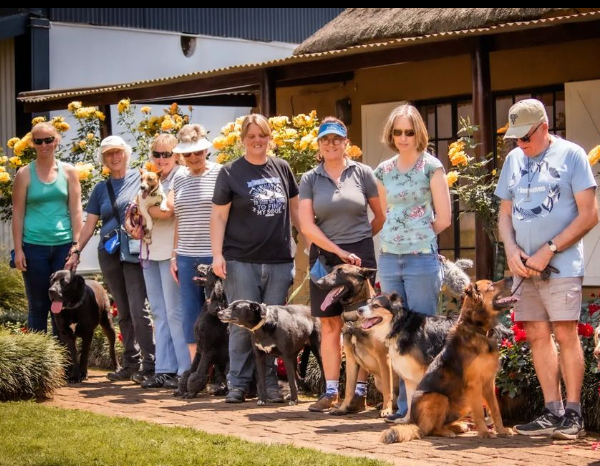Avoid jumping on people! Keep quiet! Take no food from me! Dog owners typically seek dog training to stop their dogs from doing something they don’t like.
Dogs’ Reasons for “Misbehaving”
Dogs do not come into the world understanding every human regulation. The ease with which they coexist with us and their ability to get along with serious matters is a testament to their uniqueness. However, when things don’t work out, it’s usually because our dogs don’t grasp what we humans think and believe. We can typically address the problems if we take a moment to comprehend their reason.
Following What’s Effective

Your dog’s behavior is mainly determined by what happens to it. They engage in activities that provide them with food, entertainment, attention, and other desires. They cease engaging in activities that yield no benefits or produce adverse outcomes. How soon they get in the car will depend on whether they usually get in to go to the park or the vet.
Often, your dog’s intentions are more straightforward than you may imagine. They pull on the leash to walk more quickly, leap to welcome and gain attention from others, and disobey your command to “sit” since it serves no purpose.
Sensing insecurity
Emotion is a dog’s other main driving force behind behavior. Their feelings influence dog behavior in a given setting. When a dog feels uneasy or afraid, they will attempt to flee or stop things. Happier and more at ease dogs may be better listeners and learners. Ensure your dog is comfortable and safe before trying to understand and modify their behavior.
They Are Aware of Nothing Different
Poop in the house: dogs don’t do it to bother you or to point out how beautifully you decorated. The fact that they shouldn’t is just lost on them. It’s common for dogs to view the world differently from humans regarding what is significant or valid. When a dog lives in a medium-sized house that is much more important than us, why not designate specific locations for elimination? Similarly, even though it may seem minor, our dogs find great significance and intrigue in sniffing out the intriguing signals hidden beneath the single tree at the end of the street.
In the event that your dog exhibits behavior that is not in line with your expectations, it is your duty to teach them your expectations as well as provide them with means of obtaining what they require. You can’t expect them to instantaneously stop doing what makes sense to them, and they can’t read your mind.
Chose the important priorities first
When we witness a problematic behavior, our immediate thought is frequently that we must punish it in order to get it to stop. Yet you must begin with the fundamentals in order to completely terminate an undesirable behavior.
Consult a veterinarian
It is common for behavior issues to be associated with medical issues. A dog’s behavior may change as the first indication that it’s not feeling well or is hurting. In order to rule out medical concerns, especially if the behavior is new, speak with your veterinarian.
Satisfy Their Needs
Dogs must exercise, play, sniff, chew, and socialize with other dogs. They may exhibit behavioral issues to obtain what they need if their basic requirements aren’t satisfied. Although exercise isn’t a panacea, it is necessary to attend to your dog’s needs before engaging in further training that will be beneficial.
Deal with Fear
If fear or other strong emotions drive the problematic conduct, you must first deal with those. This step is necessary for any different strategy (though teaching other behaviors can be part of the plan) to solve the problem behavior. Learn more about modifying emotional responses by reading this.
Avoid The Issue
A measure known as “management” is being taken to stop the problematic conduct before it starts. Unlike teaching, management is based on structuring your dog’s surroundings to make a specific behavior impossible or unlikely. One sort of management is housetraining your dog while using a crate. Another management tactic is never leaving food on the counter for your dog to steal. Although management won’t always teach your dog new behaviors, keeping undesirable habits from emerging and becoming stronger is crucial.
How to Manage Unwanted Conducts In Dogs
Dogs can show some unwanted conduct sometimes, especially when the owner doesn’t really pay attention to the small things. There are ways to handle those conducts which we will be learning in this section.
Provide An Alternative
You probably want your dog to do very few things, but there are undoubtedly many things you don’t want them to do. It is usually always faster to concentrate on teaching and rewarding a desirable behavior rather than chasing your dog around in an attempt to stop the undesirable activity. By doing this, you can simplify your life, spare your dog from punishment and annoyance, and have a well-behaved dog.
Although it can take some time and effort to train a new behavior, it is rarely as tough as punishing every problematic behavior all the time. Combining desensitization, counter-conditioning, and management with positive reinforcement is a safe, enjoyable, and effective way to handle any behavior issue you may be having. Positively rewarded dogs make the “correct” behavior choice voluntarily and joyfully.
Disrupt and Reroute
You may nudge your dog in the right direction when you witness them engaging in a problematic behavior. Draw them in and demonstrate the action you want them to take—puppies who only learn what works and what doesn’t benefit significantly from this. Give your puppy a toy instead if they are attempting to chew on the coffee table, for instance. Redirecting can help your dog understand what the desired behavior is, in addition to management to help prevent mistakes.
When the “right” decision satisfies your dog’s requirements and is as accessible as the incorrect one, or even more so, you may intervene and redirect them more effectively. Redirections are helpful but use them sparingly since they can create problematic patterns in which the dog believes that making the “wrong” decision is the only way to obtain what they want.

Discard the Prize
Ensure your dog doesn’t benefit from the undesirable behavior you want them to stop. When they need or desire something, dogs do whatever it takes to acquire it. To ensure that the problematic behavior never “works,” it is ideal to Ensure you control entirely the desired outcome. Still, management is one approach to ensure your dog doesn’t get rewarded for doing something you don’t want. Say you might be giving attention or a small piece of food off your plate to someone begging or acting obnoxiously. You will need to take away that reward by ignoring the action, rejecting the beseeching puppy dog eyes, or leaving the room if you don’t want these behaviors to continue.
However, attention is only one driving force behind some problematic actions. Question: “Will my dog mind if I ignore them when they exhibit jumping on people?” To teach your dog how to get your attention more desirably, it’s crucial to reward them for the behavior you do want them to exhibit, even if the answer is “yes.” Providing your dog with the “right” method to obtain what they need or require is only just.
Remind your dog not to reward a behavior that was previously “working”; otherwise, they may become quite angry. They could be more obnoxious, noisy, or determined to keep trying for a while after they try even harder. Teaching your dog a different behavior is the best approach to avoid this.
Retribution
Punishment can seem valuable because your dog’s conduct is typically driven by their desire to get what they want and avoid what they dislike. If the dog performs something and then receives a reprimand, a jerk on the leash, or any other unpleasant or painful experience, the dog won’t repeat that behavior. The punishment issue is that it is typically the least effective means of modifying behavior. You can also apply the below measures.
- Occur without any wait at all following the behavior.
- Happen without fail, even if you’re busy or not there.
- Set your boundaries so that you stop the behavior now and lessen it going forward.
- Be associated in your dog’s mind just with the problematic behavior and not with any other person, location, circumstance, etc.
This is more complex in practice. You may have tried using punishment to alter a behavior and discovered that you have to keep trying until the behavior changes. This indicates that the conduct isn’t changing due to the punishment and that you aren’t progressing.
There is a significant chance that your dog may develop fear or even aggression when punishment is applied, mainly if it is used erratically. The punishment is associated with the person administering it and other people or animals nearby rather than just their behavior. If you consider utilizing punishment, you should take it seriously, as it is not a tiny risk.


